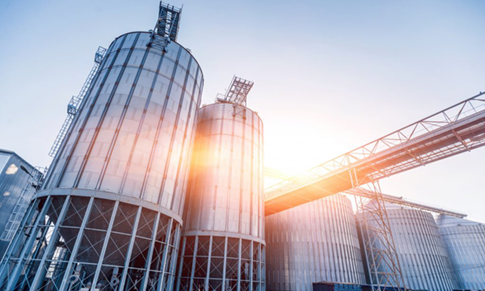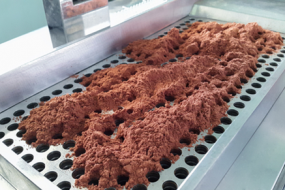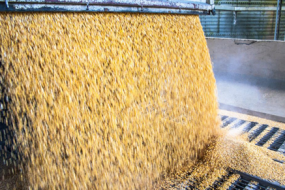Key Learnings from the 2017 Corn Milling Plant Dust Explosion
For powder processors that work with combustible dusts, dust explosions are an ever-present risk in their facilities. While the number of explosions is certainly on the downswing thanks to new technologies, enhanced safety regulations, and other plant innovations, they still happen.
In 2017, Didion Milling, a corn milling plant in Wisconsin, made national news after an explosion killed five people and injured 12. Among the injured was a young man who had both legs amputated after they were crushed by a railcar.
Hearing such sobering news, you may go to reviewing your site’s safety procedures and prevention strategies. After all, you want your team to be safe, with equipment and procedures in place to prevent and suppress explosions. But there are also major financial and business implications that deserve your attention.
In this piece, we offer key learnings and considerations that every powder processor can learn from this tragic incident.
Human Costs
As evidenced by the Didion incident, dust explosions can cause major injuries or prove fatal to members of your workforce. According a 2017 report from Purdue University, there were five grain dust explosions in 2016 with three fatalities and eight injured — making the Didion incident more costly than all 2016 incidents combined.
Furthermore, during the past 10 years, there’s been an average 9.2 grain dust explosions per year. One of the most destructive dust explosions was in 2008. It was actually a series of explosions, and they demolished the Imperial Sugar Company site. The explosions were fueled by combustible sugar dust and sugar that had spilled from equipment. There were 14 workers killed and many other injured, making it the deadliest plant explosion in decades.
Business Costs
In addition to the human cost, the financial implications of a dust explosion can be enormous — which may not come as a surprise. But just how wide-ranging they are may.
Expensive Fines & Legal Fees
A dust explosion can be especially costly if evidence shows it could’ve been prevented. The Occupational Safety and Health Administration (OSHA) hit the family-owned Wisconsin grain mill with more than $1.8 million in federal fines following the explosion, citing that it could’ve been prevented if “well-known” industry hazards had been addressed.
OSHA fines are serious, whether they’re a few thousand dollars or in the millions, all of which impacts the bottom line. The Wisconsin grain miller is appealing its fine, which means lawyer costs and legal fees, in addition to any fines the company may eventually pay.
Extensive Facility Damage
Dust explosions almost always result in serious damage to facilities. The owners of the Wisconsin mill plan to build a new state-of-the-art plant, but rebuilding and ensuring OSHA compliance will be costly and could take years to complete.
To add more context, another company, Imperial Sugar, took several years to recover from a deadly explosion and was eventually bought by a global commodities company.
Bottom-Line-Busting Downtime
Building off the previous point, a dust explosion also results in product loss and costly downtime. Not only does this cut into revenue, but it’s also disruptive for your customers. This could potentially translate into future business losses if customers find another company that can meet their needs while yours is offline.
Critical Damage to Your Reputation
The reputational consequences of a dust explosion can also do extensive damage. In the eyes of many people, an explosion implies negligence, as do government fines. It may look like the company did not value its employees enough to ensure a safe work environment.
Depending on its extent, an explosion also could be seen as a violation of trust between the business, its customers, and the surrounding community. They relied on the business to operate responsibly and on the surface it looks like the business owners didn’t care. Rebuilding trust can be just as costly as rebuilding a facility.
An Investment in Safety Pays Off
As we touched on earlier, the good news is that dust explosions in the United States have fallen dramatically over the past decade or so. But to keep it going down it’s more important than ever for processors to invest in equipment, maintenance, processes, and people to keep their workers and bottom-line safe.
Powder Process-Solutions has nearly five decades of experience designing high-quality dust collection and suppression systems, BFM® fittings, conveying systems, and more to prevent dust explosions. We engineer custom solutions based on the unique needs and dynamics of each powder processing plant we serve, including the food, dairy, and nutritional industries.








